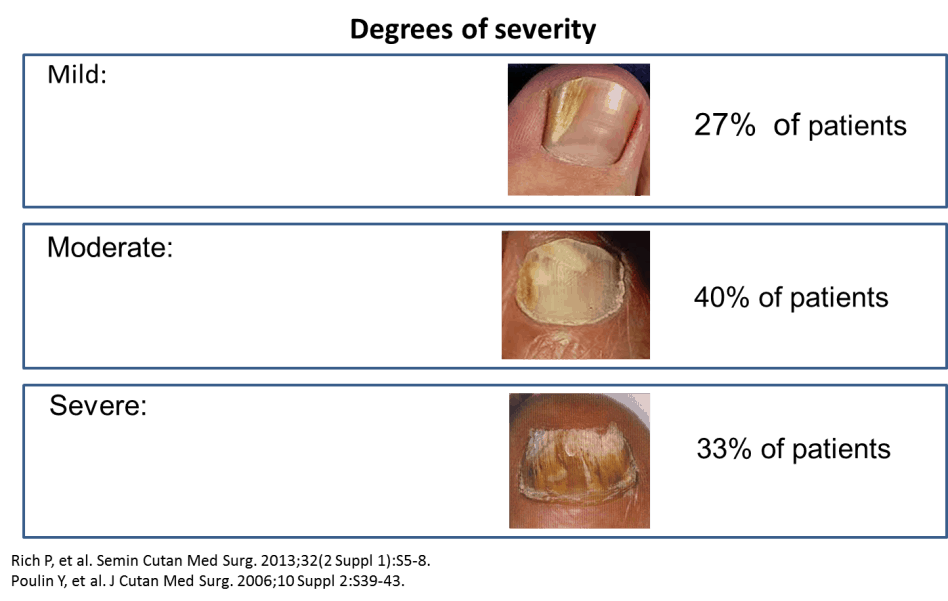
Symptoms, Treatment & Prevention
According to the Canadian Skin Patient Alliance, approximately 8% of Canadians are affected by nail fungus. Men are 2.4 times more likely than women to develop an infection.
Nail fungus is caused by different types of fungi, yeasts, and molds, and is the reason for 50% of all nail problems.
Symptoms
Fungal infections are contagious, likely to spread to other nails if left untreated (yikes!).The infection is gradual and it may take time to notice significant symptoms but the longer you wait, the more damage is being done to the nail.
If you’re unsure whether you have nail fungus, examine your nails for the following symptoms:
- brittle and “crumbling”?
- thicker than usual or changing shape?
- lifting off of the nail bed?
- white or yellow streaks or is it changing colour (yellow, green, brown, orange)?
Fungus thrives in the 3 D’s: damp, dark and dirty environments. This is the main reason why your feet are more susceptible to nail infections than your hands. Wearing shoes that trap heat and moisture and going barefoot in public areas (particularly pools and locker rooms) are common ways to be exposed to infection. Other factors include previous nail injuries, skin infections such as athlete’s foot, poor circulation and family history. People over 55 years in age are much more likely to be affected by fungal infections, as are those with diabetes and HIV.
Treatment
It’s common to feel embarrassed when your symptoms are visible. It’s important to seek help to begin treating and healing the nail. Choosing to work with a Certified Master Pedicurist (CMP) can help to identify the issues early and develop an action plan for treatment.
To treat the infection, part of the solution is to reduce the 3 D’s; keep your feet, socks and shoes dry, keep them clean and keep your feet out of shoes whenever possible.
The other half of the solution is to target the organisms that are growing.Easy and accessible treatments are available over the counter in the form of topical anti-fungal creams and sprays. At Bodé, we recommend Footlogix Anti-Fungal Nail Tincture for home care. To improve the absorption of the product you are using, remember to keep your infected nails filed down very short and to trim any lifted, contaminated nail. In the most severe cases of treatment, oral medication and laser treatments are also available.

Source: https://www.footlogix.com/Products/Retail-Products/Anti-Fungal-Solutions/Footlogix-Anti-Fungal-Toe-Tincture-Spray
Prevention
As with any condition, prevention is better than a cure.
Here are 7 easy ways you can try and prevent nail infections before they happen:
- Go barefoot or wear sandals more often. Whenever you don’t need to be wearing shoes, kick them off to allow your feet to stay dry and be in the light.
- Keep an extra pair of shoes and socks handy in the event that one becomes too damp or wet.
- Change your socks during the day. Choose socks made of a minimum of 70% cotton, merino wool or bamboo. If you have particularly sweaty feet, merino wool is your best friend.
- Wash your feet 1-2 times a day, and ensure they are thoroughly dry.
- Rotate your shoes, being sure not to wear the same pair of shoes two days in a row. Choose shoes made of natural materials and that have room for ventilation, whenever possible.
- Since nail fungus is contagious, it’s important not to share personal items with friends or family members such as towels, shoes or nail clippers.
- When visiting a salon/spa ensure that they are reputable, certified and if you have any doubts don’t be afraid to ask how they sanitize their tools.
If you have questions, speak with a Bodé professional about the health of your nails or to schedule your next pedicure.
